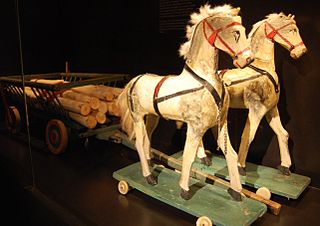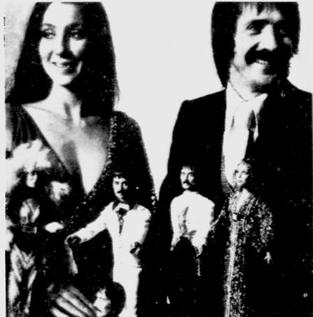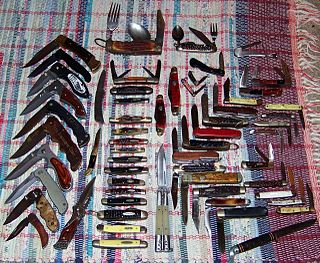
The hobby of collecting includes seeking, locating, acquiring, organizing, cataloging, displaying, storing, and maintaining items that are of interest to an individual collector. Collections differ in a wide variety of respects, most obviously in the nature and scope of the objects contained, but also in purpose, presentation, and so forth. The range of possible subjects for a collection is practically unlimited, and collectors have realised a vast number of these possibilities in practice, although some are much more popular than others.

A collectable is any object regarded as being of value or interest to a collector. Collectable items are not necessarily monetarily valuable or uncommon. There are numerous types of collectables and terms to denote those types. An antique is a collectable that is old. A curio is a small, usually fascinating or unusual item sought by collectors. A manufactured collectable is an item made specifically for people to collect.

A doll is a model typically of a human or humanoid character, often used as a toy for children, especially little girls. Dolls have also been used in traditional religious rituals throughout the world. Traditional dolls made of materials such as clay and wood are found in the Americas, Asia, Africa and Europe. The earliest documented dolls go back to the ancient civilizations of Egypt, Greece, and Rome. They have been made as crude, rudimentary playthings as well as elaborate art. Modern doll manufacturing has its roots in Germany, from the 15th century. With industrialization and new materials such as porcelain and plastic, dolls were increasingly mass-produced. During the 20th century, dolls became increasingly popular as collectibles.

An action figure is a poseable character model figure made most commonly of plastic, and often based upon characters from a film, comic book, military, video game or television program; fictional or historical. These figures are usually marketed toward boys and adult collectors. The term was coined by Hasbro in 1964 to market G.I. Joe to boys.

A true antique is an item perceived as having value because of its aesthetic or historical significance, and often defined as at least 100 years old, although the term is often used loosely to describe any object that is old. An antique is usually an item that is collected or desirable because of its age, beauty, rarity, condition, utility, personal emotional connection, and/or other unique features. It is an object that represents a previous era or time period in human history. Vintage and collectible are used to describe items that are old, but do not meet the 100-year criterion.
A bobblehead, also known by common silly nicknames such as nodder, wobbler, or wacky wobbler, is a type of small collectible action figure. Its head is often oversized compared to its body. Instead of a solid connection, its head is connected to the body by a spring or hook in such a way that a light tap will cause the head to move around, or "bobble", hence the name.

A toy soldier is a miniature figurine that represents a soldier. The term applies to depictions of uniformed military personnel from all eras, and includes knights, cowboys, American Indians, pirates, samurai, and other subjects that involve combat-related themes. Toy soldiers vary from simple playthings to highly realistic and detailed models. The latter are of more recent development and are sometimes called model figures to distinguish them from traditional toy soldiers. Larger scale toys such as dolls and action figures may come in military uniforms, but they are not generally considered toy soldiers.

A dollhouse or doll's house is a toy home made in miniature. Since the early 20th century dollhouses have primarily been the domain of children, but their collection and crafting is also a hobby for many adults. English-speakers in North America commonly use the term dollhouse, but in the United Kingdom and other English-speaking countries the term is doll's house.
Dawn dolls are small fashion dolls that were made by Deluxe Reading between 1970 and 1973. They measure 6.5 inches in height and have painted eyes and lips. The girl dolls feature rooted hair and eyelashes. The boy dolls have molded hair.

Model horses are scale replicas of real horses. They originated simultaneously – but independently – in the United States, Canada, and the United Kingdom, followed later by Sweden (UK-influenced), Germany (US-influenced), and Australia. They encompass a wide variety of fanbase activities, from those who simply like to collect, to those who show their models at model horse shows. Unlike model cars or trains, model horse collectibles do not need to be assembled from kits, although they can be altered to the collector's liking.
Boyds Bears is a line of manufactured collectable resin and stuffed teddy bears produced from the early 1980s until 2014. Boyds was acquired in 2008 by Enesco, who announced in 2014 that the company had "made the difficult strategic decision to place Boyds into hibernation".
Antique Trader is an American biweekly magazine about antiques and collectibles. Published in Stevens Point, Wis., the publication covers in-depth articles on antique and collecting trends, informative features, antique show and auction previews and highlights, decor and market trends. Columnists write about the business of antiques, postcards, dolls and toys, furniture, fine art, and bottle collecting. It features articles on antiques-related businesses such as shops, auction houses and corollary services, as well as content from F+W Media's antiques and collectible reference book line.
Ruby Lane is considered one of the biggest vintage online retail stores.

The Sonny & Cher dolls were a collection of 12-¼ inch high celebrity doll likenesses of pop rock duo Sonny & Cher. The line was released by Mego Corporation in 1976. The release of these fashion dolls coincided with the popularity of The Sonny & Cher Show prime time variety TV show.
Albert Marque was a French sculptor and doll maker of the late 19th and early 20th century.

Knife collecting is a hobby which includes seeking, locating, acquiring, organizing, cataloging, displaying, storing, and maintaining knives. Some collectors are generalists, accumulating an assortment of different knives. Others focus on a specialized area of interest, perhaps bayonets, knives from a particular factory, Bowie knives, pocketknives, or handmade custom knives.
Warwick Henderson, is a New Zealand gallerist, art collector, art fair pioneer and author of "Behind the Canvas – An Insider's Guide to the New Zealand Art Market" and "The Fascinating History of Toys and Games around The World".
John A. Daniel (c.1931-2011) was magician and a collector and dealer of magician memorabilia, Baranger Motion machines, vintage electric trains, toys, antique carousels and other collectibles.

The Train Collectors Association (TCA) is an international non-profit organization of people who operate and collect toy trains, toy train accessories, toy train books, toy train paper, and anything else rail transport related. TCA was founded in October 1954 in Yardley, Pennsylvania and is currently headquartered in Strasburg, Pennsylvania. The National Toy Train Museum affiliated with TCA is included in the "List of museums in Pennsylvania".
Integrity Toys is a toy company that designs and markets fashion and celebrity dolls and related accessories, with a focus on high-end fashion dolls. Integrity Toys was founded in 1995 by Percy Newsum. Integrity Toys is a privately held company located at 100 Chestnut Springs Road in Chesapeake City, Maryland.












